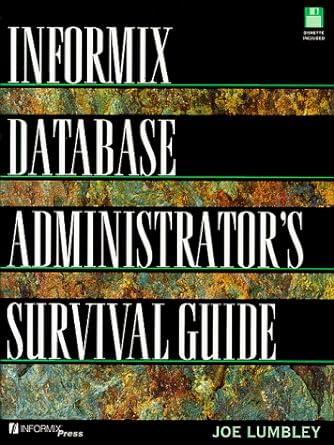Question
Use C programming a. Call a function createArray to create an array of 64 random integers in the range 1 to 450. In building the
Use C programming
a. Call a function createArray to create an array of 64 random integers in the range 1 to 450. In building the array, if the number is evenly divisible by 3 or 7, store it as a negative number. Function parameters are the array and the number of values. This function does not return any values pass by value. b. Call a function printArray to print the array, eight values per line. The function should be written with two parameters: the array and the number of values in the array. This function should have only one loop to print the values in one array. It will be called several times in the program to print various arrays, but will not have different loops to print different arrays; there should be only one loop, adaptable to any array. c. Call a function mean to find the arithmetic average (mean) of the values in the array. Parameters are the array and the number of elements in the array. The return value is the average (data type float). In main, print the average. d. Call a function minimum to find the position of the smallest value in the array. Parameters are the array and the number of elements in the array. The return value is the position of the smallest value. In main print the position and the value at that position. e. Back in function main prompt the user to enter a value to be searched for in the array. Call a function sequentialSearch to do a sequential (linear) search to determine if the value entered is in the array. Function parameters are the array, the number of values in the array, and the value to be searched for. In main, print whether the value is in the array or not and its location in the original array. You may use the algorithm found in classwork or another method. In main, print whether the value is in the array or not and its location (if found) in the original array. (You must use a function for the search. Do not simply determine by inspection.) f. Call a function bubbleSort to copy the original array into a new array and then to sort the second array in ascending order. Both arrays should be in the function parameter list, as well as the number of values in the array. Use the bubble sort algorithm found under Sample Programs in Files for sorting. The nested loop used for the sort may be inserted entirely in this function. From function main call the function printArray to print the sorted array. Do not print in the bubbleSort function. g. For two points extra credit: Call a function positives to copy all of the positive values in the original array to a new array and to count the number of positive values. The function should have the original array, the number of values in the original array and the positive array as parameters. (The array of positive values should have been already declared in function main with 64 elements.) It should return the number of positive values. Print the number of positive values in function main. Call the function printArray to print the array of positive numbers. Hint: The counter used to count the number of positive values can become the positive array subscript.
Step by Step Solution
There are 3 Steps involved in it
Step: 1

Get Instant Access to Expert-Tailored Solutions
See step-by-step solutions with expert insights and AI powered tools for academic success
Step: 2

Step: 3

Ace Your Homework with AI
Get the answers you need in no time with our AI-driven, step-by-step assistance
Get Started


